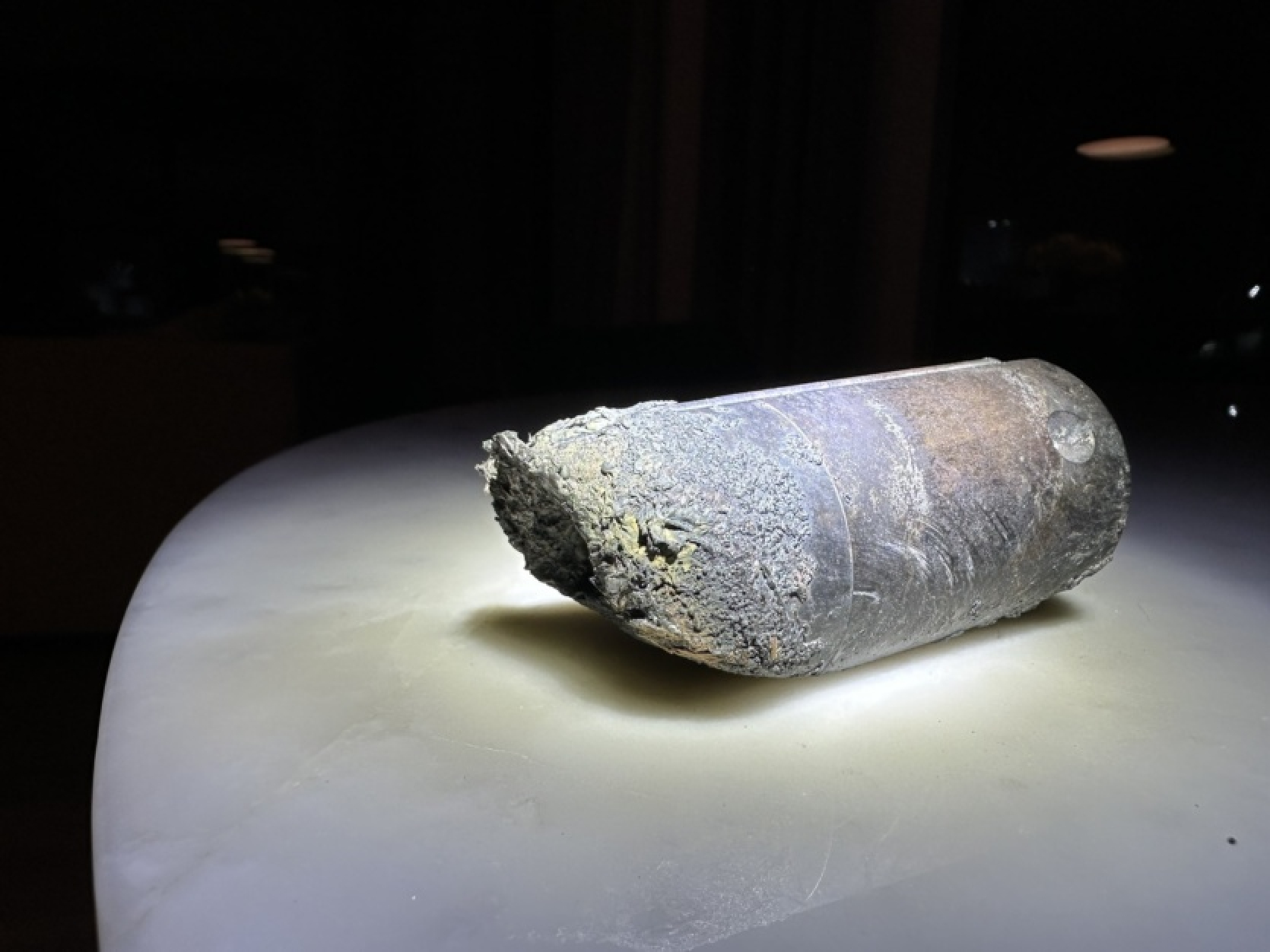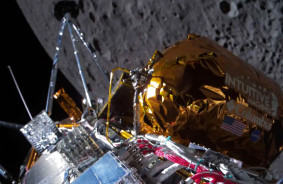A few weeks ago, a 1 kg fragment pierced the roof of Alejandro Otero's two-story house in Florida. The Nest camera captured the noise at 14:34 local time - this is important because at 14:29, space debris re-entered the atmosphere from the ISS. At that time, the object was moving over the Gulf of Mexico, heading southwest towards Florida.
The ISS debris consisted of discharged batteries attached to a cargo pallet and was supposed to return to Earth in a controlled manner. However, due to several delays, NASA decided to "dispose" of it from the station in an uncontrolled manner - most of it was expected to burn up in Earth's atmosphere.
As reported by Ars Technica, NASA representatives arrived at Otero's house to retrieve the debris and "analyze the object as quickly as possible to determine its origin."
According to the space agency, the entire pallet, including 9 batteries from the ISS power system, weighed about 2.6 tons and was larger in size than a standard kitchen refrigerator. Objects of this mass often fall to Earth on controlled trajectories - for example, malfunctioning satellites or rocket stages that have reached orbit and completed their missions.
In a post on X, Otero wrote that he is waiting for messages from "responsible institutions" to determine the amount of damage caused to his house.
Hello. Looks like one of those pieces missed Ft Myers and landed in my house in Naples.
Tore through the roof and went thru 2 floors. Almost his my son.
Can you please assist with getting NASA to connect with me? I've left messages and emails without a response. pic.twitter.com/Yi29f3EwyV— Alejandro Otero (@Alejandro0tero) March 15, 2024
According to Michelle Henlon, Executive Director of the Center for Air and Space Law at the University of Mississippi, if the object belongs to NASA, Otero or his insurance company could file a claim against the federal government.
"It will be even more interesting if it turns out that this material does not come from the United States," she said. "If a man-made space object launched into space by another country causes damage on Earth, that country will bear full responsibility towards the homeowner."
The batteries belonged to NASA but were attached to a structure launched by the Japanese space agency.
How It All Started
NASA officials claimed that the debris (which was the most massive object ever discarded from the ISS) would re-enter the Earth's atmosphere "harmlessly" on March 8, based on careful analysis.
"We do not expect any part of it to survive re-entry," NASA said.
At the same time, other space experts disagreed with the agency - The Aerospace Corporation, a federally funded research center, notes that "typically" 20-40% of the mass of a large object reaches Earth (the exact percentage depends on the structure, and these nickel-hydrogen batteries were made of metals with relatively high density).
The European Space Agency also acknowledged that some fragments of the structure could reach the Earth.
The history of ISS debris is linked to a failed launch of the Russian Soyuz spacecraft over 5 years ago, which had to make a rapid ballistic descent due to problems with the carrier rocket. On board were Russian cosmonaut Alexander Ovchinin and NASA astronaut Nick Hague - the latter was supposed to go out into space to install a new set of lithium-ion batteries delivered by the Japanese HTV cargo ship to the ISS, but the mission was postponed to 2018.
This delay in the carefully planned schedule disrupted the multi-year plan to upgrade the ISS's electrical system batteries. Each time the HTV spacecraft delivered new batteries to the station and took away the old ones - the last time this happened was in 2020, and since then, the last structure with faulty batteries has remained on the ISS (other cargo vehicles - SpaceX's Dragon, Cygnus Northrop Grumman, and Russian Progress - cannot accommodate the HTV cargo pallet).
In March 2021, NASA "disposed of" the cargo with batteries using a robotic arm - they drifted in orbit for three years until aerodynamic drag pushed the structure back into the atmosphere.
Space Debris
If NASA confirms that the fragment that fell on Otero's house last month came from the ISS - this would not be the first such situation related to property damage caused by an object falling from orbit.
Fortunately, significant injuries to people were not recorded - according to ESA, the annual risk of a person being injured by space debris is less than 1 in 100 billion.
At the same time, there are several examples of significant damages. In 2003, a 30-centimeter metal bracket from the space shuttle "Columbia" pierced the roof of a dentist's office in Texas. In 1997, a lightweight piece of unidentified material struck the shoulder of Oklahoma resident Lottie Williams, which experts later linked to the re-entry of the upper stage of a Delta II rocket into the atmosphere. There was also an incident in 1969 when debris from a Soviet space craft hit a small Japanese vessel off the coast of Siberia, injuring five people.
When the large Chinese Long March 5B rocket deorbited in 2020, its debris fell on a settlement in the Republic of Cote d'Ivoire. The rocket's design is unique in that its first stage is actually accelerated to orbital velocity, rather than relying on an upper stage to orbitally insert payloads, as most rockets do.
The Long March 5B core stage has a mass of about 20 tons, a length of around 30 meters, and a width of 5 meters. An object of this size can cause significant damage if it falls to Earth in the wrong place - China did not design the rocket to make a controlled re-entry, so a few days after launch, the booster lands wherever it pleases.
As of today, four Long March 5B rockets have been launched, with more flights planned in the coming years to launch Chinese internet satellites and a Chinese astronomical observatory, the size of which is comparable to the Hubble Space Telescope. After the launch of the Long March 5B in 2022 over the Indian Ocean, a "meteor shower" was recorded, which later turned out to be debris from an uncontrolled rocket.
In 1978, debris from the Soviet military satellite with a nuclear engine Cosmos-954 was found in northern Canada. And although they did not injure anyone or damage homes, the country engaged in search operations to collect as much radioactive debris as possible. By that time, the Soviet Union had paid Canada 3 million Canadian dollars to settle the matter.
"Countries conducting space flights must minimize the risks to human life and property on Earth from re-entries of space objects and maximize transparency in these operations," said NASA Administrator Bill Nelson in 2021 after one of the re-entries of the Long March 5B.
Starlink internet satellites are designed to burn up during re-entry into the atmosphere. Recently, SpaceX has developed trajectories for test flights of its Starship due to concerns about uncontrolled re-entry. The company's rocket is the largest object ever launched into space and could pose a significant hazard if it were to uncontrolledly fall to Earth.
During the initial test flights, SpaceX intentionally directed the Starship on a trajectory that would allow it to fall over a remote area of the ocean within an hour or two of launch, instead of transferring it to a stable orbit where it could stay for days or weeks. This ensures that the Starship can safely re-enter the atmosphere until SpaceX demonstrates the ability to de-orbit for a controlled re-entry.













Comments (0)
There are no comments for now